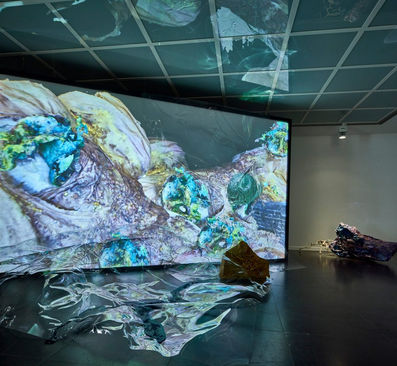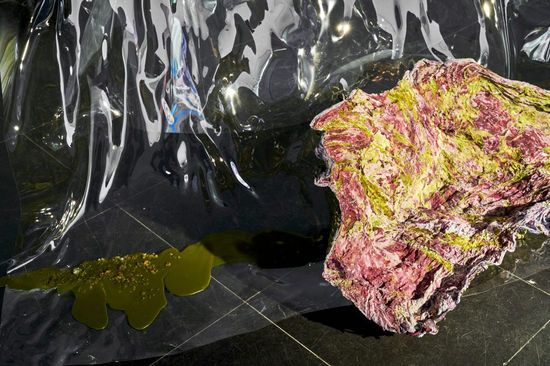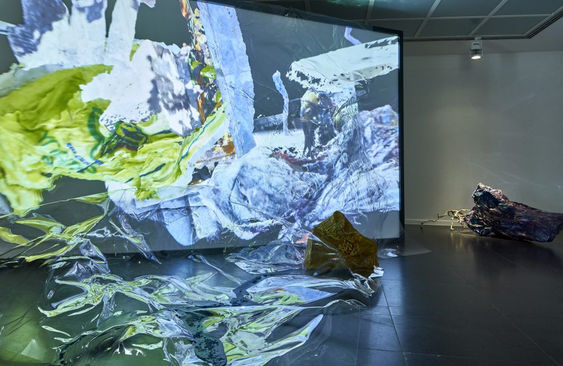For my further artistic practice I would like research the accelerating effect the implementation of digital technology and algorithms has on an individual.
For my further artistic practice I would like research the accelerating effect the implementation of digital technology and algorithms has on an individual.
Artworks and Processes
Artworks and Processes
Artworks and Processes
Artworks and Processes
Here is a heading
Ich bin ein Textabschnit. Klicke hier, um deinen eigenen Text hinzuzufügen und mich zu bearbeiten. Ich bin ein Textabschnitt. Klicke hier, um deinen eigenen Text hinzuzufügen und mich zu bearbeiten.Ich bin ein Textabschnitt. Klicke hier, um deinen eigenen Text hinzuzufügen und mich zu bearbeiten.Ich bin ein Textabschnitt. Ich bin ein Textabschnitt. Klicke hier, um deinen eigenen Text hinzuzufügen und mich zu bearbeiten. Ich bin ein Textabschnitt. Klicke hier, um deinen eigenen Text hinzuzufügen und mich zu bearbeiten.Ich bin ein Textabschnitt. Klicke hier, um deinen eigenen Text hinzuzufügen und mich zu bearbeiten.Ich bin ein Textabschnitt.
Here is a heading
Ich bin ein Textabschnit. Klicke hier, um deinen eigenen Text hinzuzufügen und mich zu bearbeiten. Ich bin ein Textabschnitt. Klicke hier, um deinen eigenen Text hinzuzufügen und mich zu bearbeiten.Ich bin ein Textabschnitt. Klicke hier, um deinen eigenen Text hinzuzufügen und mich zu bearbeiten.Ich bin ein Textabschnitt. Ich bin ein Textabschnitt. Klicke hier, um deinen eigenen Text hinzuzufügen und mich zu bearbeiten. Ich bin ein Textabschnitt. Klicke hier, um deinen eigenen Text hinzuzufügen und mich zu bearbeiten.Ich bin ein Textabschnitt. Klicke hier, um deinen eigenen Text hinzuzufügen und mich zu bearbeiten.Ich bin ein Textabschnitt.
Wagehe Raufi

© Wagehe Raufi, orbiting the seed, installation, 2021, Bundeskunsthalle Bonn
“I work with material and with my own body and I mainly deal with mixed forms.”
– Wagehe Raufi
material presence and digital fragility
dissolving the boundaries between analog and digital space
entanglement of bodies and environments
artificial landscapes
delimitation
merging of surface structures
scanning reality
loosely connected surface formations
hybrid objects
disembodied objects and textures
the unforeseen and the visual disruption
Artists website → https://wagehe.com/
Wagehe Raufis (b. 1990) artistic investigation questions the surface between material presence and digital fragility. Her installations dissolve the boundaries between analog and digital space. It is about an entanglement of bodies, objects and environments – obscuring their boundaries. They allow real objects to encounter their logarithmic depiction and assembling them into artificial landscapes. She duplicates the real items in their digital reflection, so that their delimitations seem to dissolve. Her hybrid objects unite organic and synthetic materials to form novel image surfaces of colours and textures that independently react to each other in the process. The result is a seemingly never-ending tracking shot across surface structures merging into each other. If the viewer visualizes the continuation of this movement into real space, the digital objects would become real and create an image space in which even the viewer becomes part of the construction. These ways of scanning reality allow what is solid to become porous and seemingly loosely connected surface formations, referring to how we understand and construct our environment. (FK, 2019; Lauterbach et. al., 2019; Nori, 2019)
Mammoth with Glass Eye
Video and Installation, 4:37 min, 2019
Using laser scanners, Wagehe Raufi measured found objects and her own sculptural works. They duplicate the real objects in their digital reflection. Part of the multi-media room installation were transparent and opaque hard plastic plates, which the artist shaped into three-dimensional floor objects by heating and designed by engraving with drawings.
Grids of lines emerged behind the surface of these transparent sculptural shells.
As additional elements in the room, the artist treated mesh tulle with resin and formed it into three-dimensional structures through hardening. Raufi applied pigments, chemical substances and organic materials such as hydrogel or agar-agar to their surfaces.
The different mixing and drying processes between the organic substances ensured that their consistency, color and surface structure changed. In exchange with the environment and the surrounding materials, the fabrics dried and warped and dissolved the surface. (FK, 2019)
The hybrid objects combined organic and synthetic materials to form new pictorial surfaces made of colors and textures, which reacted with each other independently in the process. Wagehe Raufi explored how different technical and analogue processes can be used to translate objects into other media and forms. Through the method of scanning, rendering and transferring analogue objects into their digital images, things became transparent and disembodied. The objects referred to the software used to recognize and measure the objects themselves. (FK, 2019)

© Wagehe Raufi
© Bundeskunsthalle Bonn, Wagehe Raufi – Bundespreis für Kunststudierende
Wagehe Raufi – Bundespreis für Kunststudierende (2021)
(1:12 – 1:38)
(de) “Wagehe Raufi kreiert Environments - räumliche Installationen mit unbestimmten Bildern und zirkulierenden Objekten. Entgegen digitalen Bereinigungsprogrammen, die darauf ausgelegt sind möglichst alle Unebenheiten zu eliminieren und so glatte, geschmeidige, digitale Oberflächen zu erzeugen, konzentriert sich Wagehe auf das Unvorhergesehene, den visuellen Störfall.”
/
(eng) “Wagehe Raufi creates environments - spatial installations with undefined images and circulating objects. Contrary to digital cleaning programs, which are designed to eliminate as many bumps as possible and thus create smooth, supple, digital surfaces, Wagehe focuses on the unforeseen, the visual disruption.”
Mapping Discomfort
Sprechsaal Gallery in Berlin-Mitte, 2019
“Everything is in motion – people, ideas, objects – they travel from one place to another in days, hours or merely seconds. Surely, the ever-growing interest in these processes is also part of the artistic practice of a new generation of artists, becoming more and more diverse in their cultural, geographical and socio-political backgrounds. Nevertheless what exactly does it mean to tackle issues relating to identification, subjectivity and belonging at the advent of the 21st century? Through mapping moments of discomfort, the different artistic positions interweave, vary or overlap, suggesting a critical dialogue about ourselves and the numerous notions of identity as part of the consequences of contemporary media-centered, capitalist globalization.” (Lauterbach et. al., 2019)


Key Takeaways
Wagehe Raufi uses the disruptive effect to criticize contemporary media-centered, capitalist globalization. I am inspired by the diversity of her sculptures and projections, with which she addresses the viewer on different levels and thus reaches him better. The feeling of uneasiness and the simultaneity of multiple levels of information spreads unnoticed.
I am particularly fascinated by how she works with transparent sculptures in front of her projections, thereby making the space changeable and at the same time overcoming the distance between the viewer and the projection surface.
References
(FK) Frankfurter Kunstverein (2019) Wagehe Raufi. Available at: https://www.fkv.de/wagehe-raufi/ (Accessed: 23.05.22)
Langgartner, A (no date) Cleaning & Value. Available at: https://wagehe.com/ (Accessed: 23.05.22)
Lauterbach, M et. al. (2019) Mapping Discomfort. Available at: https://www.hfg-offenbach.de/en/calendar/mapping-discomfort#event (Accessed: 23.05.22)
Nori, F (2019) And This is Us (Exzerpt). Available at: https://wagehe.com/ (Accessed: 23.05.22)



